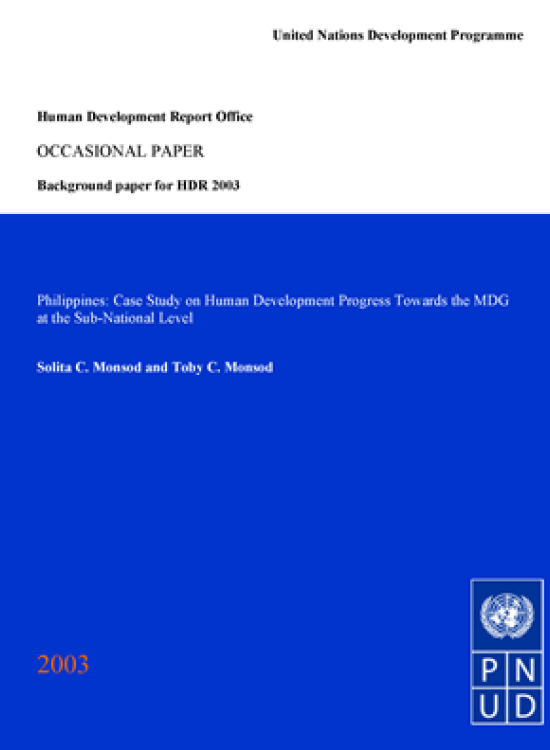Philippines: Case Study on Human Development Progress Towards the MDG at the Sub-National Level

Download Report by Language
Document
philippines2003.pdf
(814.09 KB)
Citation
Monsod, Solita C., Monsod, Toby C.. 2003. Philippines: Case Study on Human Development Progress Towards the MDG at the Sub-National Level. New York.
Philippines: Case Study on Human Development Progress Towards the MDG at the Sub-National Level
Posted on: January 01, 2003
In a recent assessment of the Philippines’ effort towards the MDG 2, regional disparities in outcomes were noted. This hinted at possible spatial factors, such as intrinsic geographic features and location-specific socio-political dynamics, driving performance. Such correlations were not further explored however. The objective of this paper is to look at provincial level outcomes to determine which areas or peoples are lagging in key MDG outcomes and why. It seeks to answer the question: are any patterns of isolation or discrimination across locations or subpopulations indicated by the current dispersal of outcomes? If so, what may explain these? We focus our attention on current poverty, per capita income, infant mortality and primary education completion rates, that is, the MDG targets most closely related to the dimensions of the human development index. Related measures of deprivation - the percentage of underweight children under age five and the lack of access to safe water – are also probed.